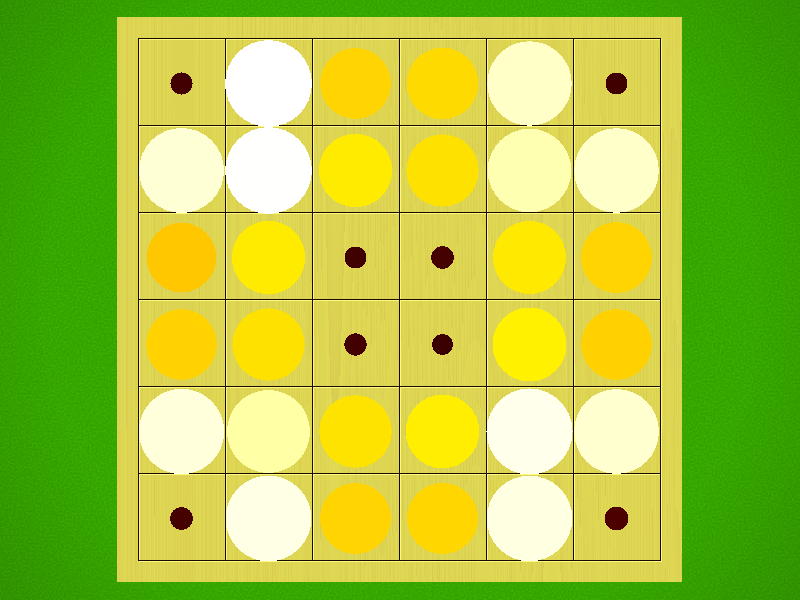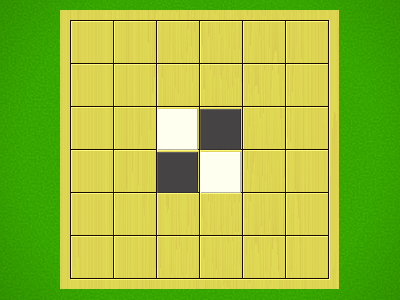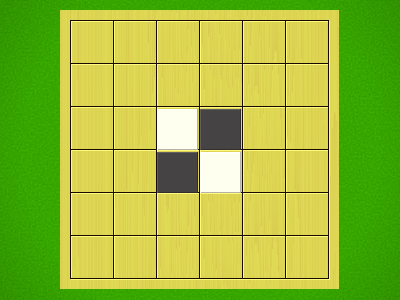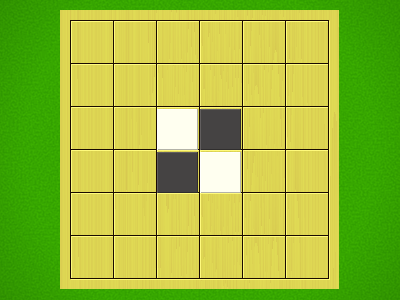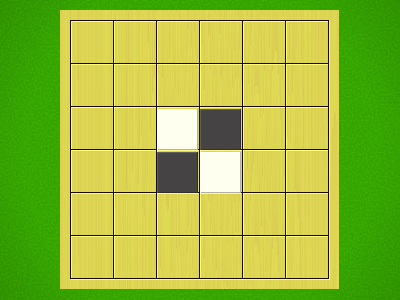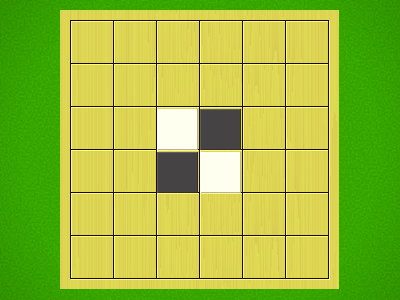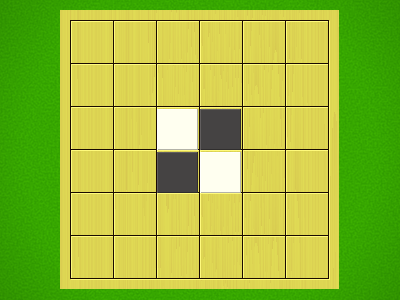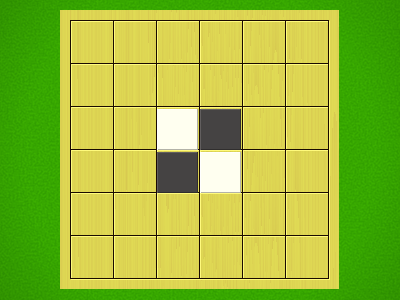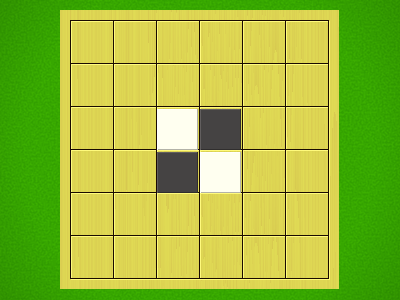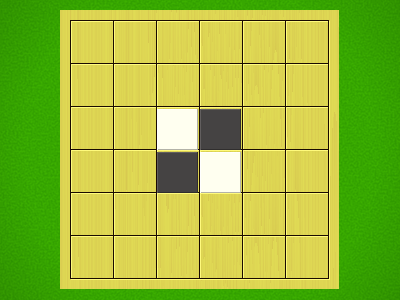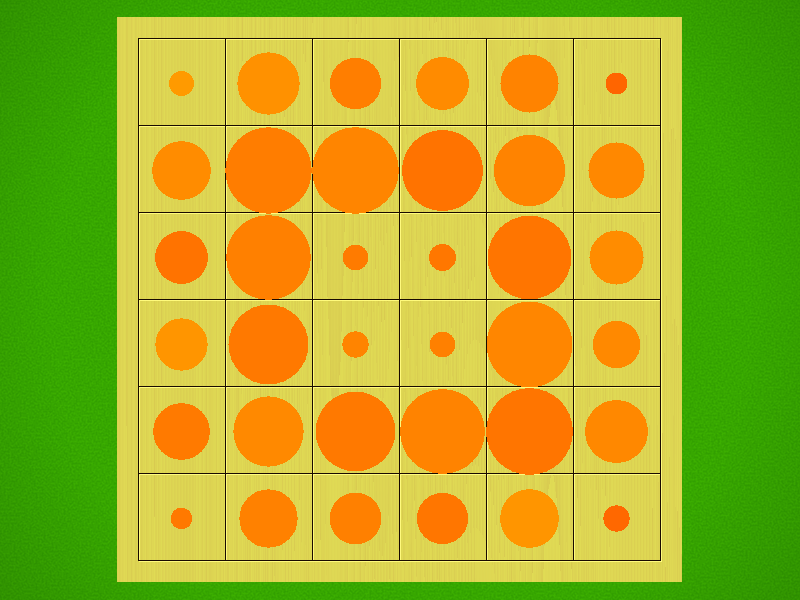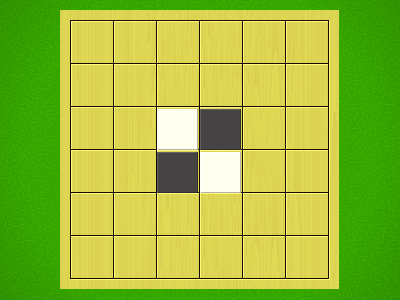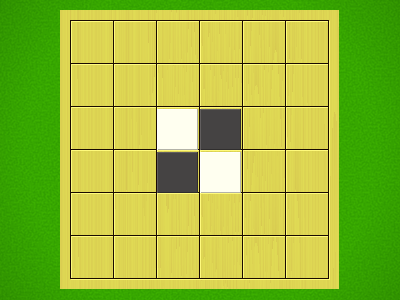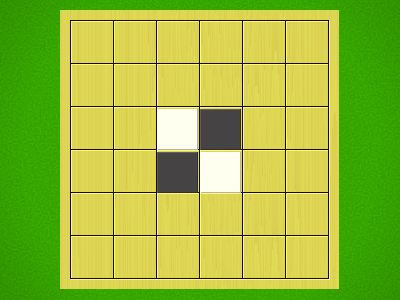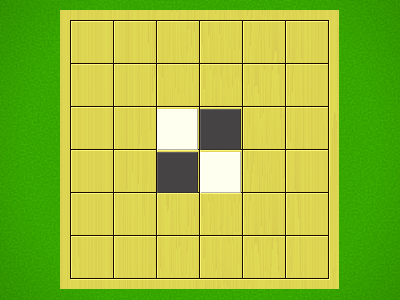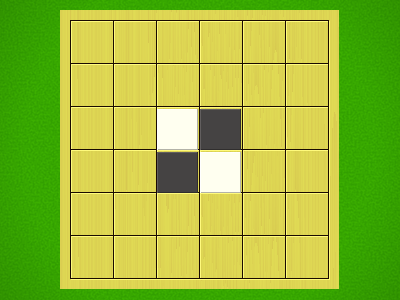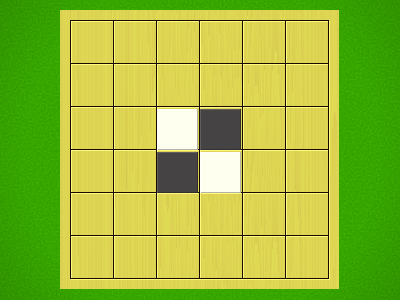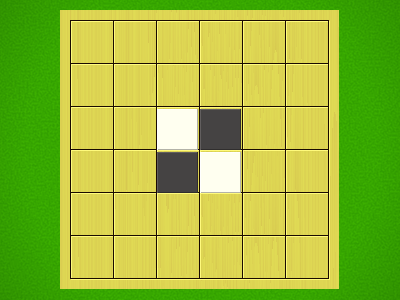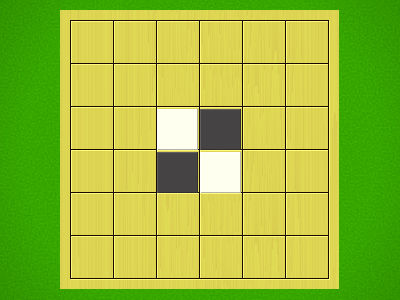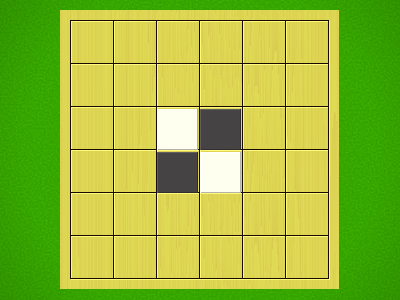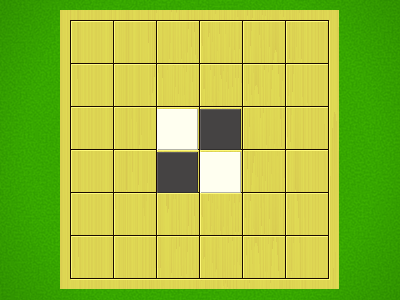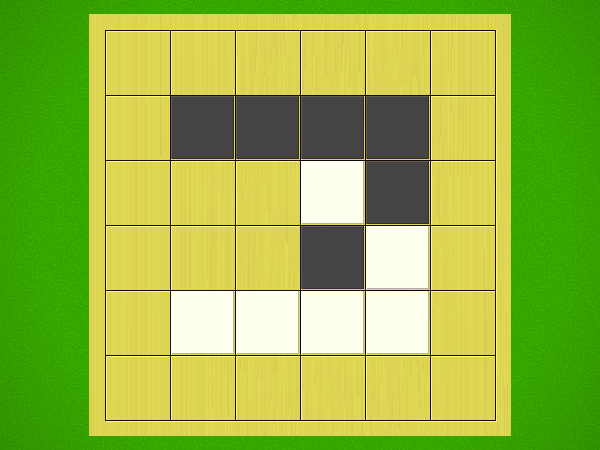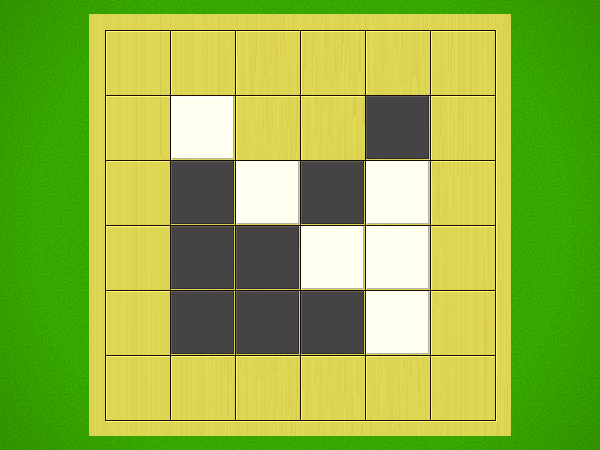Rules
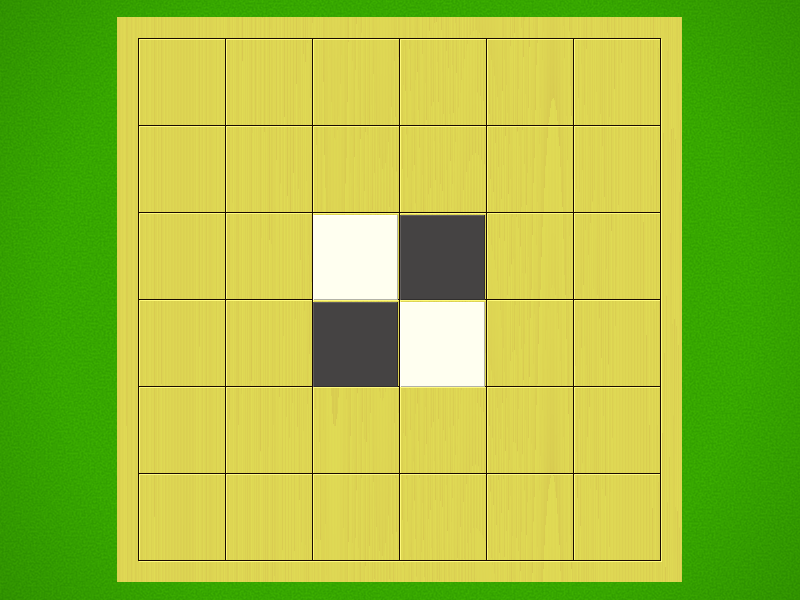
Start Position
The grid
The four by four (4x4) invisible and floating grid is formed by the cards placed and may shift during play. Players must place their card adjacent next to another card on the board, orthogonally or diagonally.
Play
Players (starting with black) take turns, placing cards of their assigned colour on the board. During a play, any cards of the opponent's colour that are in a straight line and bounded by the card just placed and another card of the current player's colour are turned over to the current player's colour.
Each turn, you must flip at least one card.
Clear a column or row
If you place a card so there is a fifth row or column, you must remove the opposite row or column; however, you may not remove a row or column containing more cards than you just flipped. If you cannot do so, the play is illegal.
Goal
The game ends when a player has no legal moves.
The player with most of their own colour facing up wins. Ties are possible.
